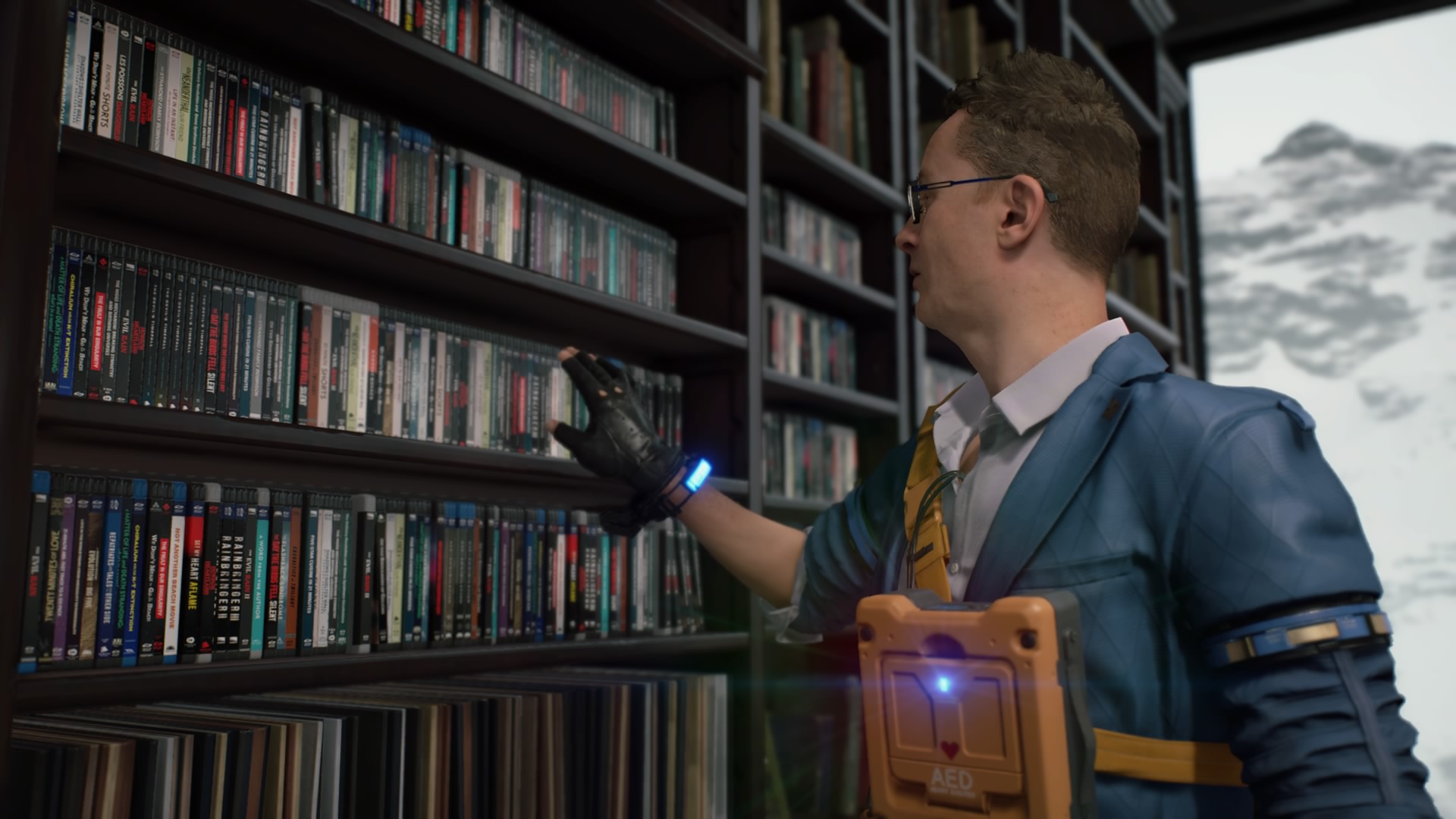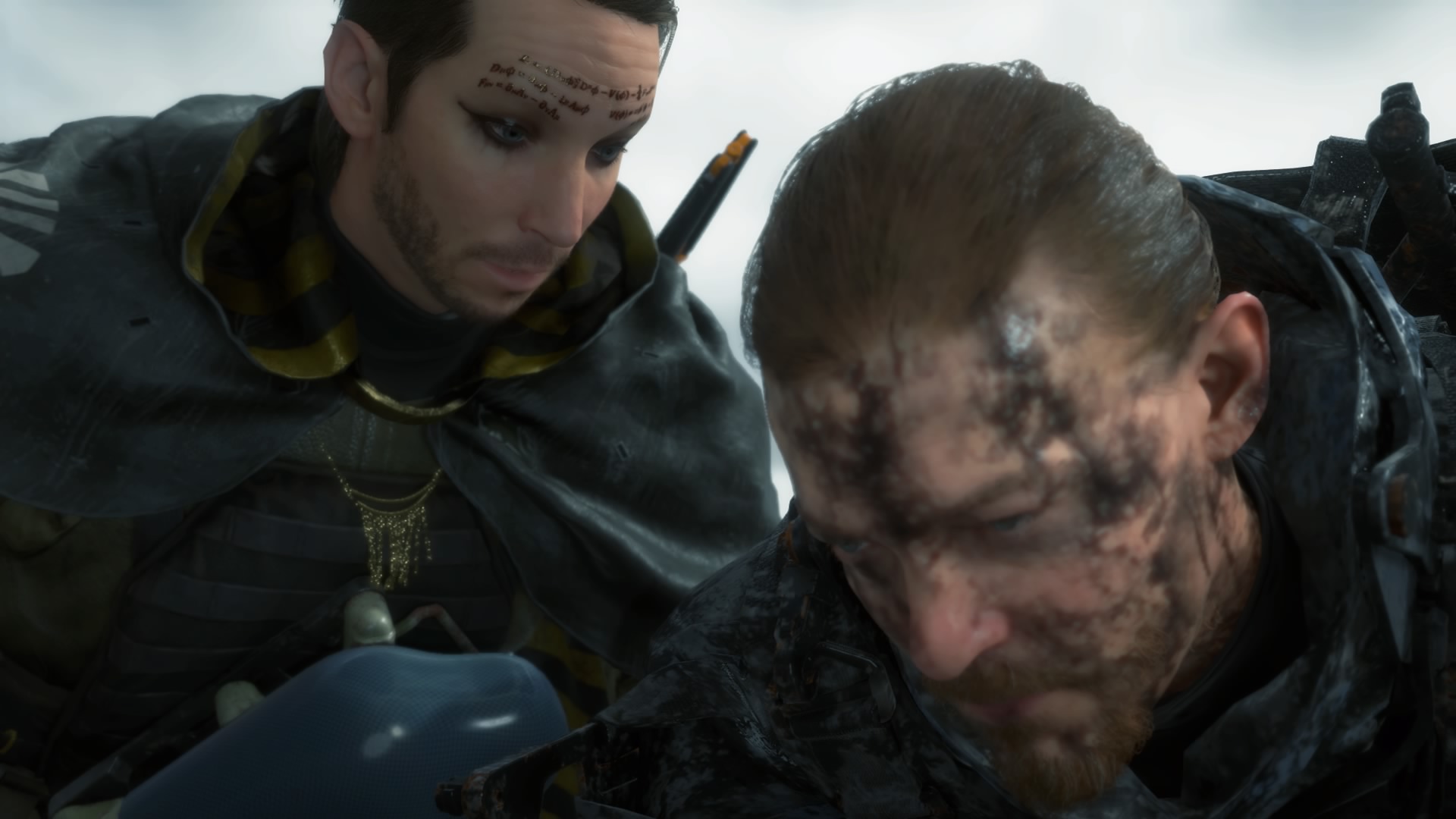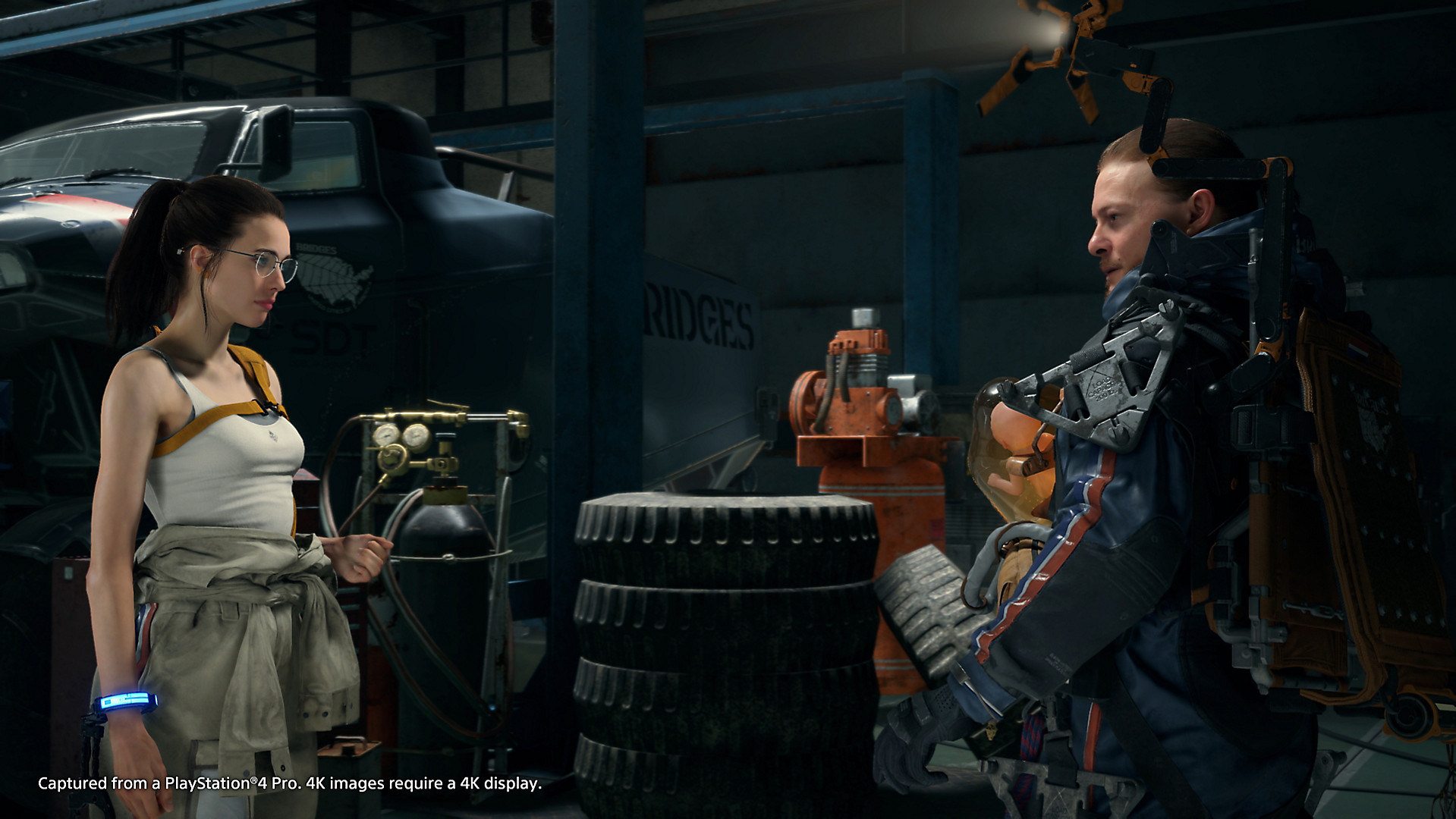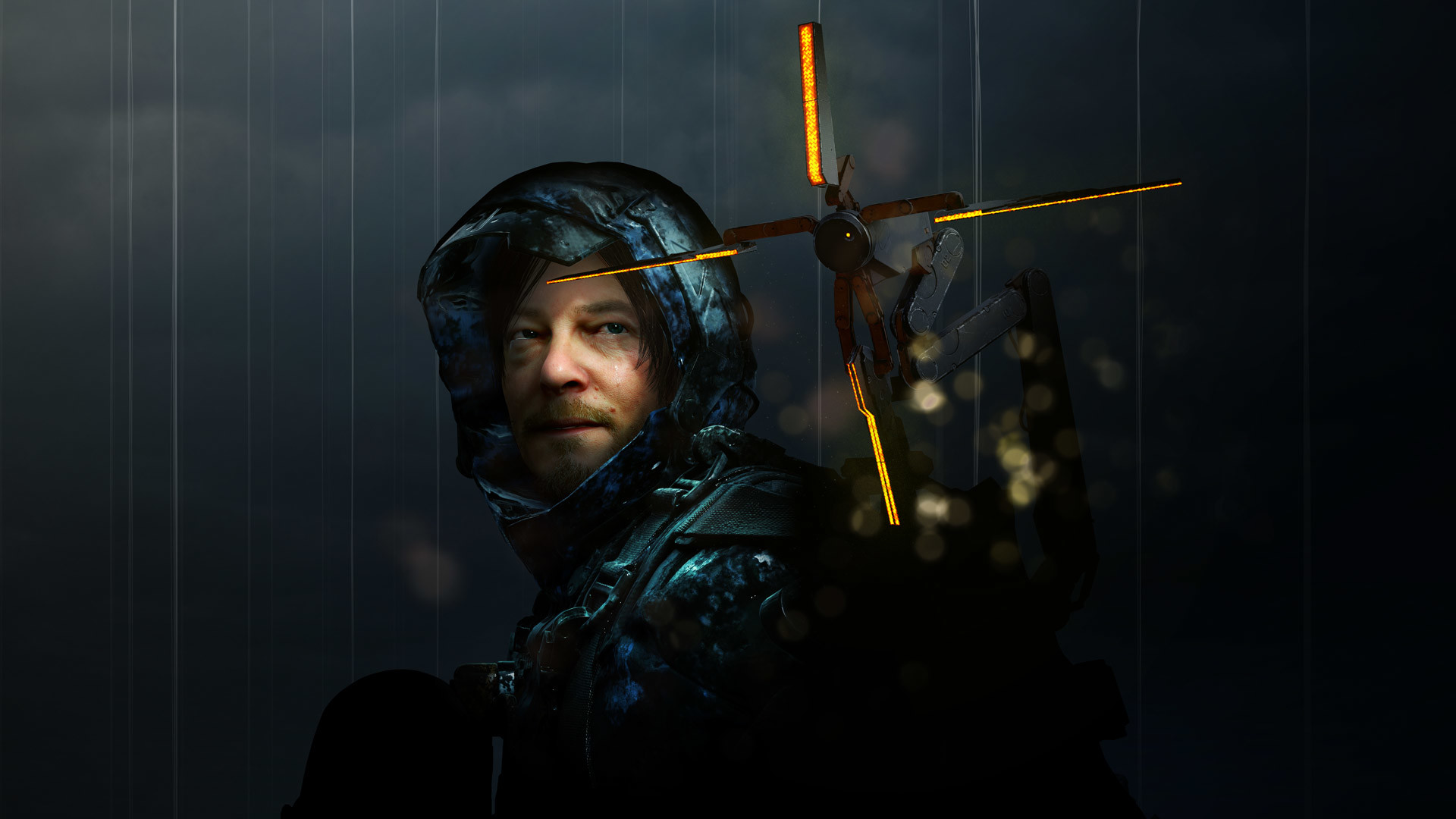Death Stranding’s Hero Is Just A Side Character
Credit to Author: Cameron Kunzelman| Date: Tue, 10 Dec 2019 13:41:13 +0000
Postscript is Cameron Kunzelman's weekly column about endings, apocalypses, deaths, bosses, and all sorts of other finalities.
Spoiler Warning: This article chock full of spoilers about major and minor subplots in Death Stranding.
Death Stranding purports to be a game about a man named Sam reconnecting cities across America. He’s hooking them into a thing called the chiral network, which allows them to print structures, but he’s also putting them in contact with those other cities, their people, and their history. As director and writer Hideo Kojima said before launch, “it's about making people think about the meaning of connection.” That’s Sam’s story. The mechanics work metaphorically with the broader plot to deliver a product that connects geologic timescales up with the intimate finitude of a few human lives. It is powerful, and when it works it works well, but what I was struck by in the game had very little to do with Sam’s story and its connection to the potential flourishing or annihilation of all life on the planet.
Instead, I found that Sam seemed more like a side character in the lives of all of the other people we meet along the way. The ways they fit into their world, and how they want to fit into their world, was so much more poignant and touched than Sam’s own epic journey. They have tones and notes of melancholy unmatched by other games. Their plots move by the micromillimeters of facial expressions and faint touches, not explosions or gunfire. When those happen, in fact, they’re the most uninteresting parts of the game. In contrast with other talky genres of games (visual novels, RPGs, whatever Disco Elysium is), Death Stranding has zero interest in letting the player intervene or make choices in its narrative. We’re here to watch something play out, not to craft it in our image.
At its core, Death Stranding is a game about giving characters other than Sam the ability to show you their world. They monologue about their lives, and the dramatic work of the game is about trying to see how that moves their story and their perspective. Though we experience this from the viewpoint of Sam, these scenes are almost never about him. Instead, it is about watching people with deep, truly exceptional traumas attempt to live on after the end of the world.
Death Stranding is about using Sam as a way to see these coping strategies in the face of the death of everything.

I don’t think I’ve ever been more charmed by a character than Heartman. His skin is that of Winding Refn, the director of Drive and The Neon Demon, but he’s acted and voiced by Darren Jacobs, who takes a light, friendly tone with the character who dies every 21 minutes.
He’s presented to us as a scientist, a researcher. No one knows more about Beaches, the border between the living and the dead, than Heartman. Every 21 minutes his heart stops, granting him three minutes to search through his own and others’ Beaches to find his dead wife and child so that they can be together again. Three minutes in the “real” world, of course, is much longer in the twilight world. And so his life goes on, researching and guiding Sam by in the light and searching futilely in the dark.
Refn’s appearance (literally) as Heartman alongside Guillermo del Toro’s as Deadman is an homage to directors he respects, but it is also a kind of key for thinking about Death Stranding as a total work. The Metal Gear Solid franchise was Kojima wrangling the action film into a video game container and then seeing what he could produce from that DNA. Bombast drives the plot of those games; explosions and violence make the world move whether it wants to or not.
Death Stranding is that same strategy but for the accessible art films of the 20th and 21st century. I say “accessible” because I don’t have the sense that he or his team are watching Jeanne Dielman or In Vanda’s Room for inspiration. But the greatest hits of the Criterion Channel can be felt throughout the game, and Heartman’s entire story seems constructed out of gendered, art-y tropes: the melancholy man with the dead wife and child who struggles, again and again, to rescue them from the underworld like a neon-loving Orpheus. His entire character seems dedicated to producing an emotion like the “it’s too bad she won’t live, but then again who does?” line from the end of Blade Runner. The shape of this apocalyptic world won’t change, but someone has to keep living.
At the same time, though, it does work. Heartman does pull at the heartstrings. Jacobs’ performance combined with the hypnotic, repetitive lines that every character speaks in this game means that you cannot get away from Heartman without knowing, and understanding, the perspective that he has on the world around him. He inhabits this strange, overdetermined narrative space where there’s very little surprise if you’ve seen the cohort of things being referenced, but in some ways that’s to the character’s benefit. If you know the DNA, you know where he comes from. Trauma, remixed.

Higgs is a different kind of creature. The villain of the game for a while, Higgs is a terrorist who just wants to see the world burn. He’s used old-world nuclear weapons and post-death stranding BT voidouts to destroy some of the last vestiges of society. He’s a clown, equal parts Heath Ledger’s Joker and Final Fantasy VI’s Kefka, who spends a lot of his time repeating synonymous phrases about how all of this is going to end right now whether I want it to or not. He also licks faces like an extreme creep.
Heartman is emblematic of how a certain strain of cinema, its tone and its characters, comes together in Death Stranding. Higgs is the same thing, but for video games. He’s a stock character that stands in for the ways that video games wrap themselves around contrived circumstances and thin characterizations to create their bosses and bad guys, the paper-thin forces of antagonism that exist to be solved over a couple attempts at a pulse-pounding encounter.
Higgs is an obligation on the part of Kojima Productions to give us what we expect. He appears when we need an obligatory boss fight or some friction along the path of our delivery. He summons up tentacle creatures with golden masks to challenge Sam and raise the stakes. His politics, his reason for his terrorism, are so vague as to be nonexistent. When Sam faces him in battle he calls for a “good old fashioned boss fight” to create “one more ending before the end,” doubling-down on the meta reference so hard that it becomes comical. And the icing on the cake, of course, is that he’s performed by Troy Baker, an actor so ubiquitous that he’s eclipsed Nolan North as the marquee “quality VO guy” in games.
As a character, Higgs comes together as a narrative constraint. After all, he has almost nothing to do with the actual threat at the bottom of Death Stranding. There’s a total extinction event coming that the characters can only delay, not prevent, and at best Higgs might have sped that along by a few days at most. He does not matter in any material way to the plot in its final form, but from the perspective of how the audience takes in the whole game, Higgs helps illustrate how the rest of these characters work.
Everyone is wandering around this apocalyptic world trying to find some sort of meaning in their lives. The most fulfilled, Heartman among them, have latched onto a goal and pursued it to the fullest. We’re only given glimmers of life beyond Sam’s direct encounters, but the impression given is that the vast majority of people are living in fear in underground shelters under extreme duress. The divide between the living and the dead has been breached, but it also is more policed than ever since the thread of a voidout is omnipresent. The game would have us believe on-face that Higgs has embraced chaos in the face of this, but the reality is that he’s embraced extreme control: he lives his life governed by the rules of the video game plot. He’s a cog in a machine, perfectly timed and paced and metered so that Sam can fight him in the right moments. He plays Sam in almost the exact same way as Liquid Snake played Solid more than 20 years ago. His life, his rules, and hand-me-downs from another world.
In this world, that structure seems like the best bet a person can have. Better to be a cog and understand where you fit than to spin out into eternity.

458 million years ago, two asteroids impacted our planet in what is now northern Sweden. They were a pair in that the event that generated them was massive, catastrophic, and happened far away from Earth. Sharing both an origin point and an ending, these large pieces of space rock floated in tandem until they met utter destruction, knowing nothing other than what they shared. The craters of those asteroids are called Lockne and Målingen.
Death Stranding’s Lockne and Målingen are mostly the same way. The twins, who have the occult powers of the ever-vague DOOMs like the rest of the characters I have mentioned, share all of their experiences with one another. Or they did. There’s a convoluted backstory between them: a surrogate child and souls and bodies and BTs and living and the dead. It’s too much to recount here, but what I find so fascinating about these two characters is that they are too much. To tell it raw, the fact is that most of the characters in this game are profoundly simple. They have one thing they desire, and they might talk around it or repeat their motivations in strange ways, but they’re uncomplicated in a mechanical sense. Heartman wants to see his family one last time and then to die. Higgs wants to fit somewhere in this nightmare.
Lockne and Målingen want each other. They want to be fulfilled. They want the chiral network, that thing Sam is building throughout the game, to be strengthened and made complete. They want the future, and they want a child. They are characters whose world we only understand through their desires, which flow out from them like the tendrils and umbilical cords that emanate from everything in the world of Death Stranding. This complication seems to be the point, as Lockne and Målingen turn from two separate characters into a single one, a work of reduction that brings two distinct entities with thoughts and feelings of their own into one body that seemingly gets passed between or doubly inhabited by both.
The question of desire after the end of the world fuels much of Death Stranding, and Lockne and Målingen are some of the only characters who, as far as I can tell, get what they want out of this world. The chiral network is completed. The true and final apocalypse is held at bay. They get to be with one another, and they are the combinatory Mama for the entirety of the world that will springboard from Sam Porter Bridges saving the world. It’s through these two characters that we get to see death and life and sadness and happiness but also actual, true fulfillment. That’s not the say that we shouldn’t be critical of all the steps along the way—there’s some real trauma that’s endured, and a lot of handwaving of maternal suffering by the plot proper—but in the end, there’s a product, and the product is a livable world.

I could write one of these for each of the characters in Death Stranding, and I’ve still yet to say much of anything about Sam himself, the apocalypse postman who puts the world back together with trust and values and his general unwavering fear of touch or intimacy. I haven’t talked about his bruises or the raw patches the straps of his backpack carve into him as he trots atom bombs, living tissues, and tchotchkes across the wastes.
But I also don’t feel obligated to. Death Stranding does a lot of work to make you feel responsible for the people around Sam, but I rarely felt anything for him as a person. He’s a middle-man, a legendary go-between, and Norman Reedus’ contemplative acting style works to push Sam into the background even in scenes where he’s the main character. Sam exists to help the viewer fill out the world. He’s living landscape, one with everything. While he has his own plotline, even in that he is functionally a puppet, a proxy figure that allow us to learn about Die-Hardman and Cliff and President Strand in ways we never would have if Sam hadn’t been there to create the positive friction that is being a video game protagonist. This isn’t to say that his story isn’t important or present, but instead that that story is almost wholly separate from the vast amount of time we spend hearing people talk about this world.
Sam’s life is a side plot in the web of stories in this world.
Death Stranding’s way of stringing together scenes with emotional people across a dying world is a realm that no other game touches or even attempts to address. At the bottom, I think that this is the point of the game: we have to do the tasks to get to the people and then help them survive a little longer. Our protagonist is nothing more than a supporting character in these longform tragedies, and that’s what makes Death Stranding so worthwhile. I don’t think we’ll see anything else like it for a very long while.
This article originally appeared on VICE US.